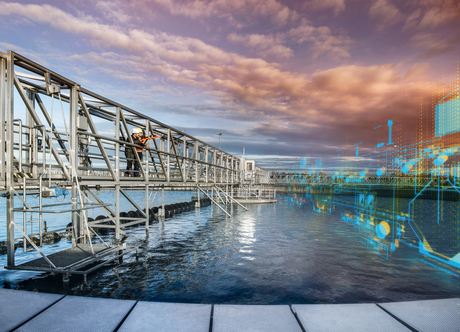Digitalisation in the water industry

The water and wastewater industry faces challenges of ageing infrastructure, rising customer demands and constant pressure to be more efficient.
The water and wastewater industry faces challenges like never before. Ageing infrastructure, rising customer demands and constant pressure to be more efficient are driving major new trends in the creation and intelligent usage of smart data globally as well as in Australia.
There are two significant elements that impact the forward trajectory of the water and wastewater industry globally and in Australia:
- Utilities are coming to terms with the fact that intelligent ‘smart’ data usage — as opposed to mere ‘big data’ — relies on strong data analytics capabilities providing utilities with tangible value.
- The infrastructure in water utilities has aged significantly. Underground pipe networks installed at the turn of last century had a design life of 100 years and those installed in the 1950s had a design life of 50 years. Hence, the bulk of a water utility’s infrastructure is coming to the end of its useful life.
The issue of ageing infrastructure is a global concern. In the US alone, it would require approximately $1 trillion in improvements to meet current design standards.
However, the evolution of technology has presented the industry with new possibilities. Opportunities presented by digitalisation are being used to offset the issues of ageing infrastructure, while concurrently meeting increasing demand. Digitalisation is helping utilities understand their networks’ behaviour and dynamics, which in turn helps in reducing loads and stresses — thereby increasing asset life and reducing pipe bursts and leaks.
Analysis of large quantities of data including flow, pressure, water quality and infrastructure condition is helping utilities understand the behaviour and dynamics of their networks like never before. Increasingly, most of this is being done remotely.
Typically pumps and similar critical infrastructure are installed with physical redundancy (for example, two pumps to cover for the case of one failing). However, there is a risk that the redundant assets may not be in optimal condition. Condition monitoring of critical infrastructure is therefore starting to gain traction in the water sector, with more organisations and utilities adopting proactive maintenance strategies rather than remaining reactive.
Operation of remote assets is not new to the water sector, but full utilisation of current technology is lagging. There are several factors at play including an ageing workforce and upskilling crews to adopt technology as a part of daily work, including troubleshooting and diagnosis.
Typically, management of breakdowns on remote assets involves an automated alarm being sent to a list of mobile phones or a central SCADA control room. A technician is usually then sent to the site to begin troubleshooting and diagnosis.
Advances in automation technology now allow the SCADA control room operators to connect remotely to the asset (such as a pump station) and determine the type of fault before sending the appropriate resource to the site. If the fault relates to an instrument, an instrument technician can be sent, while if the fault relates to the power supply, an electrician can be sent. Furthermore, if a pump trips out due to high current draw, a blockage may have occurred, resulting in the need for a pipe technician or plumber.
When combined with corresponding control systems and smart water meters that measure individual consumption, such remote services will, for example, enable municipalities’ water consumption to be forecast. Pump operation schedules, for example, could then be adjusted in order to save electricity.
This kind of information analysis is crucial to an economy that is trying to get the best value out of current infrastructure investments and meet rising demands for water on tight budgets. The next 5–10 years will see a shift from using field technicians as the first line in troubleshooting and diagnostics to using the central SCADA operations team, resulting in smarter use of labour and reduced operational expenditure.
IO-Link and the role of the IO-Link Master
While it is true that IO-Link is plug-and-play from a hardware perspective, it pays to do your...
Security enhanced for digitalised industrial boilers
Industrial boiler maker Bosch Industriekessel depends on secure gateway technology to offer...
Mineral processing: a eulogy for analog
Leading mines have already accomplished an automated, digitally connected mine and are reaping...








